Thing Everyone Thinking Not Out Of The Question: Paper
“It is, of course, possible that the anonymous tweets were part of a sneaky campaign by the publisher to get the story out.”
House Ghosts
by Rachel Monroe

1.
The day my friends and I moved into the warehouse, we found cat shit in the corners and a cat skeleton in the sub-basement. The former tenant’s graffiti tags covered every conceivable surface, and the anarchists who lived upstairs made strange sounds, rendered uninterpretable by their floorboards, our ceiling. Whenever they dropped a heavy object (what were they doing up there?), a fine film of dust drifted down onto our heads. The door of my new room was red, and someone had spray-painted it with dripping, silver letters: SLUT ROOM.
None of us had ever smudged a house before, but this one seemed in dire need of psychic cleansing. I don’t remember where we got the bundle of sage, only that once we’d lit it on fire and sent its sweet smoke spiraling up toward the ceiling (and the anarchists), we had no idea what to say. Eventually, Cricket mumbled some sort of hippie exorcism, a banishment of bad vibes. We were making space for ourselves, we thought. Out with the old, and in with the new.
2.
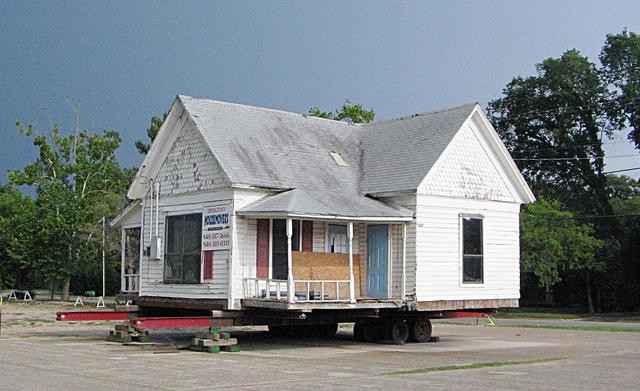
In 1989, New Yorker Jeffrey Stambovsky signed a contract on a $650,000 three-story Victorian house in Nyack, New York. He soon learned that the house had one major drawback that neither the seller nor the realtor had disclosed before he offered up the down payment: it was haunted. The house’s previous owner, Helen Ackley, was friendly with the ghosts, who preferred Revolutionary War outfits and occasionally gave her grandchildren gifts. Every morning, Ackley bragged to Reader’s Digest, she’d been woken up by some unseen force shaking her bed. When she had a week off for spring break, she asked the ghost to let her sleep in. The next morning the bed was undisturbed.
Upon learning of the haunting, Stambovsky sued Ackley and her real estate broker, seeing to cancel his contract on the house and recover his down payment. A lower court dismissed the action, and Stambovsky appealed. The New York State Supreme Court ruled that under the doctrine of caveat emptor (buyer beware), Stambovsky was not due damages. The court did, however, approve his request to cancel the sale, noting that Ackley had frequently and publicly discussed the house’s ghosts. “As a matter of law,” the court concluded, “the house is haunted.”
3.
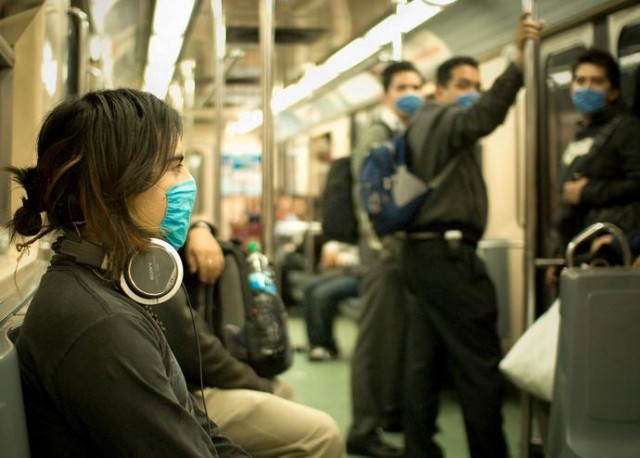
Horror movie hauntings have a reassuring, if programmatic, narrative logic: torture or betrayal or abuse or an evil cult produces a ghost, which proceeds to traumatize anyone trying to share its space. Maybe it’s angry or maybe it just wants to be loved; in any case, the consequences are usually violent. But if you have ever seen a ghost — and 41 percent of Americans report that they have — it was most likely a very different experience. On the whole, the ghosts of daily life are less homicidal and more enigmatic than their horror movie counterparts. They hide the salt shakers and bother the cat. They flit by the door on rainy evenings, or stand by the bed with a sad look on their faces. It is unclear where they came from, and difficult to know what exactly it is that they want.
In his taxonomy of the ghosts of New York state, mid-twentieth century folklore scholar Louis C. Jones noted that “something more than a third of our ghosts died violent or sudden deaths,” implying that the majority died more quietly, in the traditional manner. (Perhaps, then, they have nothing major to avenge, and thus make for tolerable roommates.) The converse also appears to be true: famous murders don’t tend to produce famous ghosts. Nonetheless, most of us would prefer not to live in a house where a stranger has met a violent or tragic end. But why is that, exactly?
In research for her 1999 master’s thesis, folklore scholar Julia Kelso interviewed real estate agents, homeowners, and potential home buyers in order to determine how beliefs about death impacted actual or theoretical real estate purchases. Overwhelmingly — and unsurprisingly — she found that people expressed discomfort at the idea of living in a house where someone had died in a violent manner. They gave a variety of reasons: What if the murderer came back? What if the house was impossible to re-sell? More than any fear of tangible, physical consequences, though, Kelso’s interviewees chalked their unease up to bad vibes, bad energy, bad dreams: “I’m afraid I’d obsess about it, have bad dreams about it, get nervous when I was home alone at night,” one subject explained. “I don’t expect I’d ever have any physical trouble, except for what I caused myself with my own irrational fear. I know that the fear is irrational, but I also know I would have it.”
Most (but not all) were fine with the idea of living in a house where someone had died of natural causes. (One man, however, refused to live in a house where anyone had ever died of any reason; he tended to prefer new construction, he said. Because you just never know.) Accidents were upsetting to some, especially when children were involved, but on the whole they were less troubling than intentional deaths. Suicide-by-pills was less upsetting than than suicide-by-gun. And nearly everyone was bothered by murder.
Kelso chalks this up to superstitious uneasiness about “bad deaths.” If the ideal death occurs at home after a long, happy life, with one’s affairs put in order and one’s rosy-cheeked descendants surrounding the bed crying quietly while the priest administers last rites, a bad death is disruptive and sudden. Nothing is put in order; in fact, order is destroyed, as is any sense that the world is a predictable or benevolent place. In the Middle Ages, those who died out of turn were considered at least partly to blame for the circumstances of their deaths. Many religious burial traditions keep the bad dead away from their virtuous friends. We don’t want anyone getting any ideas.
Even those placid, rational Swedes were known to segregate their dead well into the 20th century. Burial place and method depended on the manner of death, whether it was public, quiet, shameful, or depraved:
“Public” funerals were the norm. “Quiet” funerals were for stillborn children, the unbaptized, people who had committed suicide in a fit of temper, alcoholics, and those who had given their bodies for anatomical research. The priest was present, but was allowed to read only the commitment. “Depraved” burials were for victims of duels, for anyone who had been killed in anger, died in prison, or lived an ungodly life, for murdered children, and for the unknown found dead. Their graves were situated in the “worst corner” of the graveyard, still seen in many churchyards today. The priest was not present and there was no Christian ceremony. “Shameful” burials were for deliberate suicides (who were excommunicated) and for the executed. Their bodies were buried in the forest. (Juha Pentikainen, The Dead Without Status)
“There’s a certain eerie feeling… if you know someone was brutally murdered on the floor, you know, and the blood was dripping there,” a real estate agent told Kelso. “The violence touches us in some way.” Even though it doesn’t, of course: There’s a confusion here, about where my body ends and someone else’s begins. Other people’s tragedies feel like a threat, and we prefer to avoid the contamination. Please, we say, I would prefer not to get that person’s bad death on me. I am afraid that it’s contagious.
4.
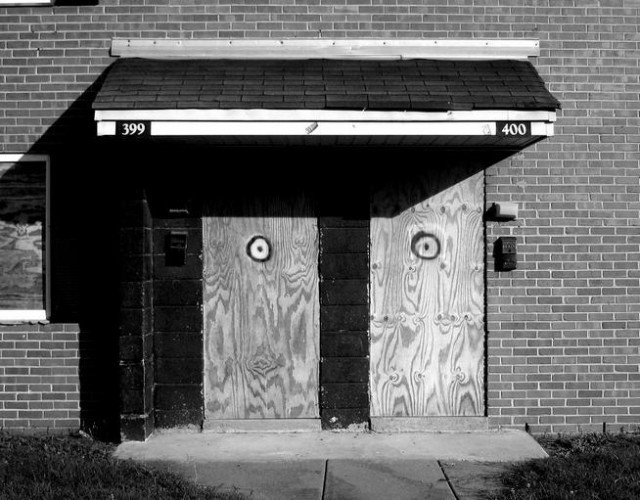
“If It were a bloody death — intentional or not — that would probably bother me,” another interviewee told Kelso. “Just the idea that they would probably never be able to get all of it up. For instance. even if it looks ‘clean,’ criminal investigators can still use luminol to detect the presence of blood, and it would still show up. The idea of a bodily fluid having been splattered all about bothers me regardless of the fluid. So in other words, suicide wouldn’t bother me unless it were particularly messy.”
Messy fluids, secret stains, blood that’s visible only under certain lights — even a house that appears ordinary may be splattered with all sorts of invisible contaminants, the physical or psychic residue that lingers long after any evidence has been scrubbed away. Think about it too hard and it can make you crazy: The room you’re in right now — someone else has lived there, maybe dozens of other people. Did they walk around naked, have sex on the kitchen counter, leave toenail clippings embedded deep in the floorboard cracks? Didn’t you read somewhere that dust is mostly dead skin cells? Their skin is piled in the corners, it’s getting on your dishes, it’s all over the floor! It’s enough to make you want to live alone in a brand new house and never open the door to anyone.
If normal strangers are bad, bloody strangers are worse: Courts have ruled that, even years after a crime, potential buyers should be notified if a house is marked by violence for fear that it remains invisibly tainted or stained or contaminated. Or stigmatized, which is actually the proper legal term for houses with substantial, non-physical damage. In the 1970s and 80s real estate law began moving away from a strict caveat emptor system, and began requiring brokers to disclose material defects such as insect infestations or nearby nuclear waste plants. By the late 1980s, some jurisdictions extended those protections, considering that houses could appear physically intact, but still be emotionally or psychologically damaged. Depending on the jurisdiction, “stigmatized properties” could include houses where people had killed themselves or been murdered; where Satanic rituals had taken place; or places with known ghosts. But violence was not the only thing that could invisibly mark a home, rendering it suspicious; in some jurisdictions, stigmatized properties also included places whose previous owners or tenants had been diagnosed with HIV.
I asked my mother, who’s an HIV/AIDS specialist, what it would take to catch the virus from a piece of property: “It’s physically impossible,” she said. “There is literally no way.” But mom! I said, and then came up with various bloody scenarios. But HIV is relatively wimpy, as far as viruses go, and doesn’t survive long outside the body. “Even if there was a mattress with a bunch of dried blood from an HIV-infected person soaked into it,” she said, “and you rubbed yourself on it, and you had an open wound, you still wouldn’t get HIV.” It’s actually more conceivable (though not probable) for hardier diseases, like tuberculosis or Hepatitis B, to be transmitted through household contact. (And even then, it’s people who are sharing the household, not people who live in the house years later, who are most at risk.) In other words, being afraid of getting HIV from your house makes even less sense than being afraid of being murdered by a ghost. (I know that the fear is irrational, but I also know I would have it.) Nonetheless, in 1989 the Texas legislature passed a law requiring brokers who had “actual knowledge” that a seller or former tenant had AIDS to disclose that information if a prospective buyer asked. (The question of what “actual knowledge” might consist of — a doctor’s note? local rumors? a really strong feeling? — was never resolved, as the federal Fair Housing Act’s provisions against housing discrimination nullified the Texas law.) No such provisions were made for other communicable diseases. Other states considered and enacted similar legislation, although none of it stuck for very long. Even now, although various privacy and anti-discrimination laws specifically prohibit the disclosure of HIV status, most casual definitions of “stigmatized property” mention murder, ghosts, and HIV infection, as if these are comparable things.
Perhaps, though, they are, in a way. As The Pagan Library helpfully points out, “You can potentially hurt yourself through your own fear much more than the ghost can hurt you.” Laws against house ghosts — like laws against house AIDS — didn’t safeguard anyone from actual harm; instead, the irrational fear of harm (which is not far removed from prejudice) was what the law protected.
5.

There is more than one way to clear a house (or a town, or a city) of its ghosts. Louis C. Jones thought there were three requirements for robust ghost lore: a place that’s been settled for a while (to provide the ghosts); housing stock that’s relatively old (to provide the haunted houses); and a somewhat stable population (to exchange and embellish the stories). Just-built suburbs may be frightening, but not because of hauntings; it takes some time to cultivate collective fear.
(This may also be why the empty strip malls and uninhabited housing developments of Florida and Arizona, those suburbs no one turned out to be able to afford, seem so sinister. They never had the chance to acquire their ghosts, and so they sit there quietly, horrifyingly unhaunted.)
So: to live ghost free, build brand-new houses and never talk to your neighbors. Depending on where you live, you may already be doing this, and perhaps it brings you peace of mind. But then again, peace of mind is overrated.
In The Gentrification of the Mind: Witness to a Lost Imagination, Sarah Schulman notes that the neighborhoods that had the highest rates of HIV infection in New York City in the 1980s became some of the city’s most gentrified neighborhoods twenty years later. A young dancer who lived in her building died of AIDS; after his death, his rent-controlled apartment jumped from $305 per month to $1,200. Meanwhile, the story of AIDS itself slowly became gentrified. Schulman describes her rage upon hearing a “clean-cut” NPR story about how Americans “came around” to accepting people with AIDS: “Now after all this death and all this pain and all this unbearable truth about persecution, suffering, and the indifference of the protected, Now, they’re going to pretend that naturally, normally things just happened to get better,” she seethes. But with the original inhabitants of that world gone — either dead or pushed to the margins by rising rents and relentless development — no one was around to argue otherwise. And so Schulman writes with the rage of a person who sees the dead who cluster on the sidewalks and cafes of their former neighborhoods, and the living who don’t even seem to notice: Watch out, she seems to be screaming: You’re walking right through him.
Gentrification, in Schulman’s formulation, turns out to be like the worst kind of spirit cleansing: rather than banishing the ugly past of a place through incense or holy water or ritual words, we simply raze their buildings and put up something sleeker and more expensive (or faux-artisanal but unghostly). Instead of ghost stories, the radio gives us uplifting bedtime narratives about how things were worse then, but are better now.
I have thought about this a lot and I am sorry I smudged the warehouse to chase out the spirits. I wouldn’t do it again. I can see no other choice but to take a radically pro-ghost position. And I think you should join me. Let’s spend some time with the quiet dead, and with angry or frightened or tragic dead, too. We can let them pass through our walls, accept their gifts. Maybe we’ll learn their stories and avenge their wrongs. At the very least, we can try to gaze upon their faces without fear. If we are lucky, someday maybe we will join them.
Rachel Monroe is a writer living in Marfa, Texas. East Village photo by Rex Brown. Propped-up house photo by Kurt Nordstrom. Contagion photo by Eneas De Troya. Condemned house photo by Megan O’Hara. Dumped items by Alan Stanton.
What A Pack Of Cigarettes Costs Now, State By State
by Sarah Jampel
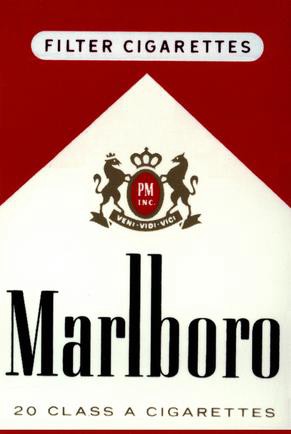
This list has been updated, as of August 2014. Click here!
Smokers, flee New York City and head to Kentucky, where a pack of Marlboro Reds will cost you practically a third of what you’re paying now. And while you’re on the road, steer clear of New Hampshire and Vermont, too: the price for a pack has jumped 35% and 25%, respectively, over the past year.
We called a gas station — and oftentimes, when we were turned away or simply misunderstood, we called several — in the most populous city of every state in the nation and Washington D.C. and asked the clerk for the price of a pack of Marlboro Red cigarettes including tax. (Obviously, local prices will vary some.)
Here’s the current price, in bold, and also how the prices of cigarettes have changed since last summer.
48. Kentucky (last year $6.56): $4.96 = -24%
47. North Dakota ($5.03): $5.04 = +.2%
46. West Virginia ($4.84): $5.07 = +5%
45. Oklahoma ($5.24): $5.19 = -.1%
44. Idaho ($5.11): $5.25 = +3%
43. Missouri ($5.87): $5.25 = -10%
42. Louisiana ($6.50): $5.33 = -18%
41. Oregon ($5.74): $5.35 = -7%
40. Wyoming ($5.21): $5.37 = +3%
39. Mississippi ($5.55): $5.45 = -2%
38. Nevada ($6.04): $5.50 = -9%
37. South Carolina ($6.25): $5.55 = -11%
36. Colorado ($5.19): $5.59 = +8%
35. Indiana ($5.56): $5.77 = +4%
34. Alabama ($5.18): $5.80 = +12%
33. Virginia ($5.43): $5.81 = +7%
32. Ohio ($5.67): $5.88 = 4%
31. Tennessee ($4.91): $5.89 = +20%
30. Georgia ($5.93): $5.93 = 0%
29. Minnesota ($5.96): $5.95 = -.2%
28. Florida ($6.29), Delaware ($6.10): $6.00 = -5%, -2%
27. North Carolina ($5.14): $6.03 = +17%
26. Nebraska ($5.99): $6.09 = +2%
25. Kansas ($6.47): $6.21 = -4%
24. Montana ($6.12): $6.25 = +2%
23. Arkansas ($7.10): $6.50 = -8%
22. New Hampshire ($4.86): $6.59 = +35%
21. Utah ($6.88): $6.64 = -3%
20. California ($6.45), South Dakota ($6.82): $6.77 = +5%, -.7%
19. New Mexico ($6.69): $6.91 = +3%
18. Michigan ($6.50), Pennsylvania ($6.93): $6.95 = +7%, +.3%
17. Maine ($6.97): $7.12 = +2%
16. Texas ($6.89): $7.24 = +5%
15. Iowa ($7.52): $7.25 = -4%
14. D.C. ($8.27): $7.89 = -5%
13. Maryland ($6.53): $7.93 = +21%
12. Wisconsin ($7.98): $8.11= +2%
11. Washington ($8.98): $8.31 = -7%
10. New Jersey ($8.00): $8.55 = +7%
9. Massachusetts ($8.49): $8.77 = +3%
8. Connecticut ($8.85): $9.30 = +5%
7. Vermont ($7.60): $9.52 = +25%
6. Rhode Island ($8.16): $9.56 = +17%
5. Alaska ($9.39): $9.59 = +2%
4. Arizona ($7.46): $9.65 = +29%
3. Hawaii ($10.22): $9.68 = -5%
2. Illinois ($10.25): $11.59 = +13%
1. New York ($12.50): $14.50 = +16%
Sarah Jampel is an Awl summer reporter.
NYC High Schools Not Just For Sexting
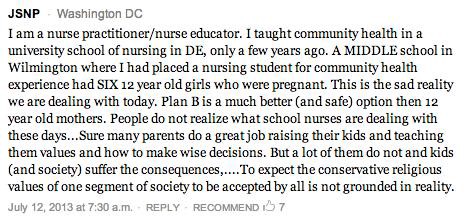
This is a super-intense article about Plan B in New York City schools, and fascinating:
A 17-year-old from Fort Greene, Brooklyn, called the school nurse at Lincoln “my new grandma.” She said she had taken Plan B “less than five times” this year. She did not give her parents the opt-out form. She said she had become pregnant twice, after her mother had taken her birth control away. “She’s the reason I got pregnant,” the girl said.
And here’s a really awesome public health quote, when you consider the essence of providing public health services is meeting people where they are:
“Most teens go to school,” Deborah Kaplan, the department’s assistant commissioner for maternal, infant and reproductive health, said, explaining the city’s decision to make Plan B available in schools, as part of a bigger sex education campaign.
5500 girls received free Plan B in the 2011–2012 school year. You should be advised, as usual, not to read (most) of the comments, for the obvious reasons.
18 Things To Do This Weekend
If you don’t want to go upstate to all the classical music festivals, which you don’t, just because, there are things to do in town! Aren’t you lucky. GROUP HUG.
What Did You Dream About Last Night?
by Becca Hafter
I asked strangers around Manhattan and Philadelphia about their most recent dreams.

Cherrie: A test, because I had a test last week.
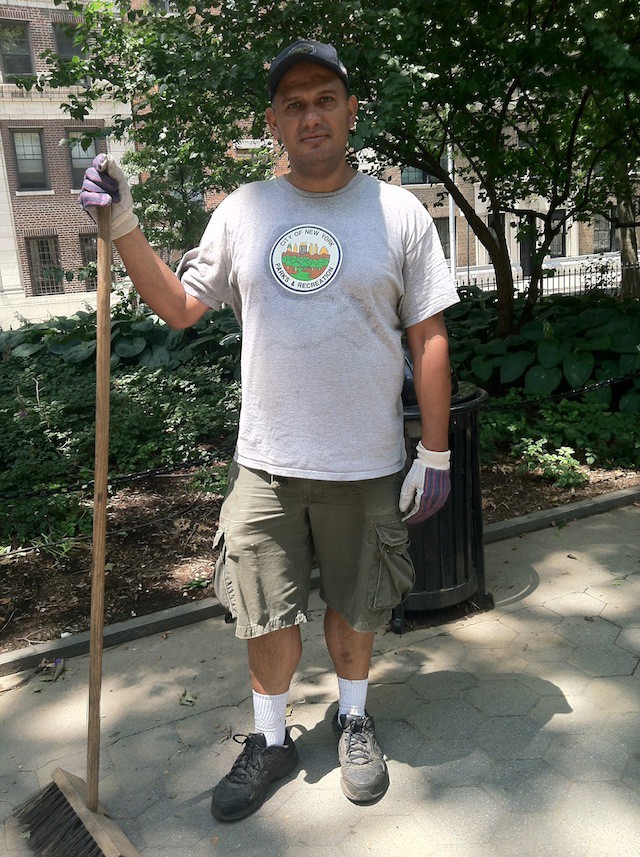
Jose: I remember my dreams, but in the morning, not right now.
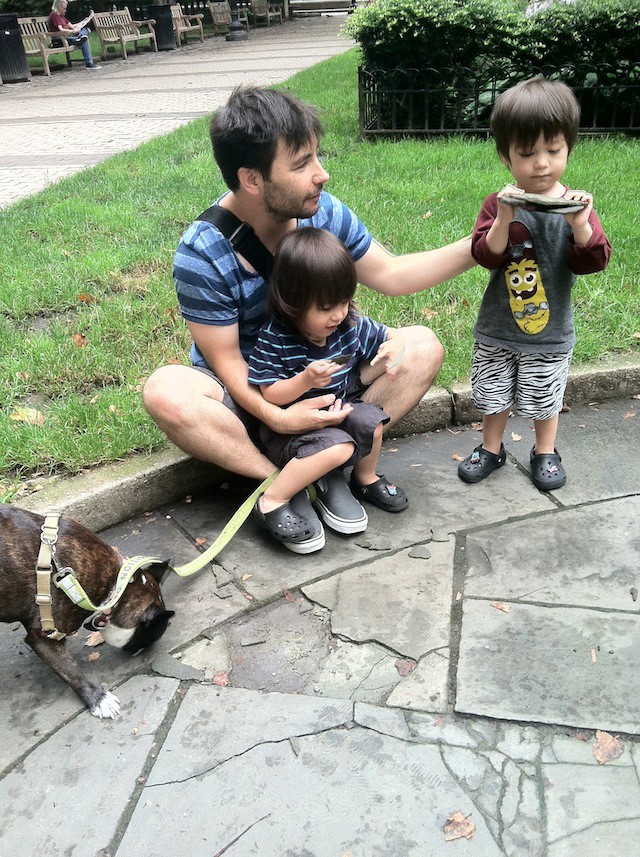
Dominic: (Milo, Luca and their dog Ruby also pictured)
It’s so loud around here that I never get to sleep more than 40 minutes at a time. I don’t think they’re going to tell you anything, they don’t have enough words.
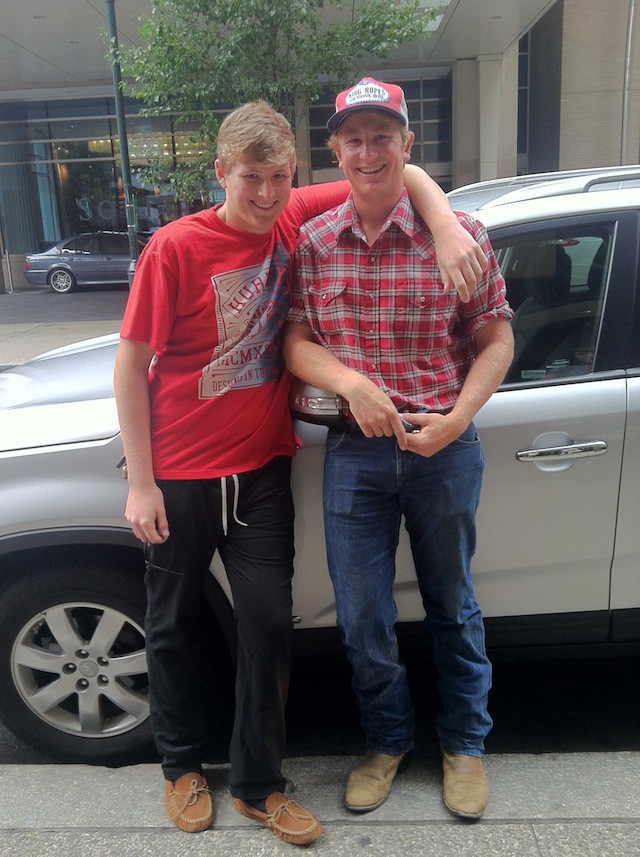
Adam: New York, being in Manhattan.
Brian: Taylor Swift.
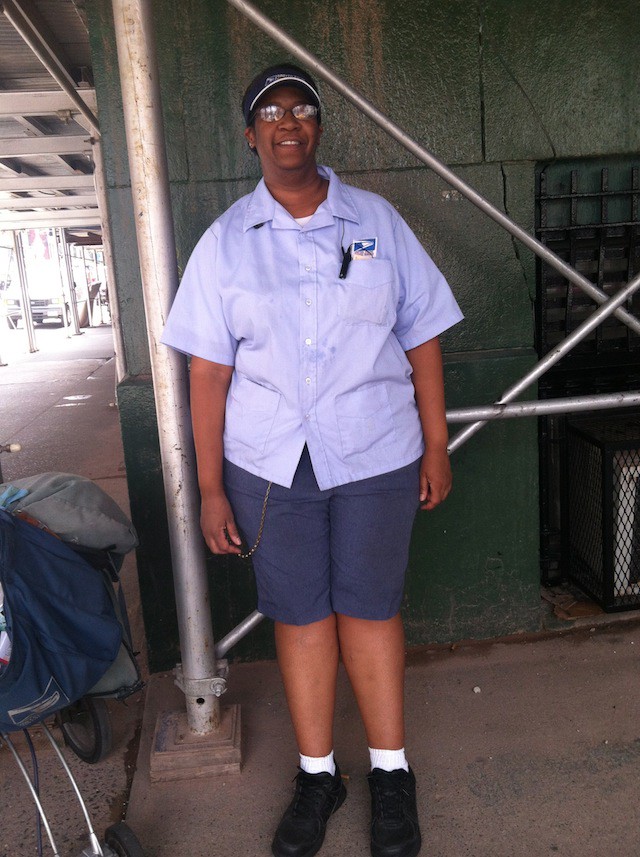
Crystal: I very rarely have dreams. I can’t remember the last time I had a dream actually, I guess I’m a boring sleeper.

Charity: The Little Mermaid.

Adrienne: Sometimes they’re vivid and sometimes I don’t remember them at all.
Chanel: It’s like a blur!
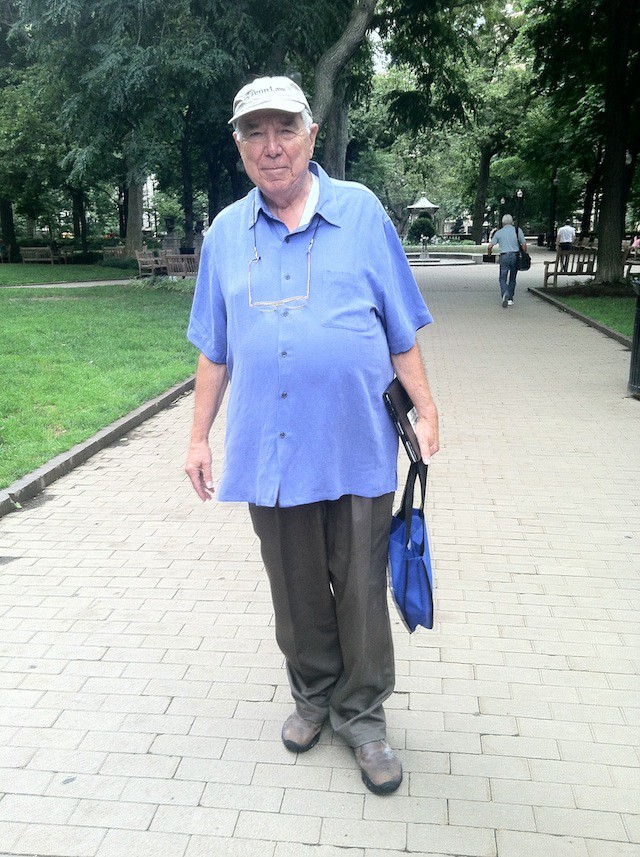
Robert: I didn’t dream.
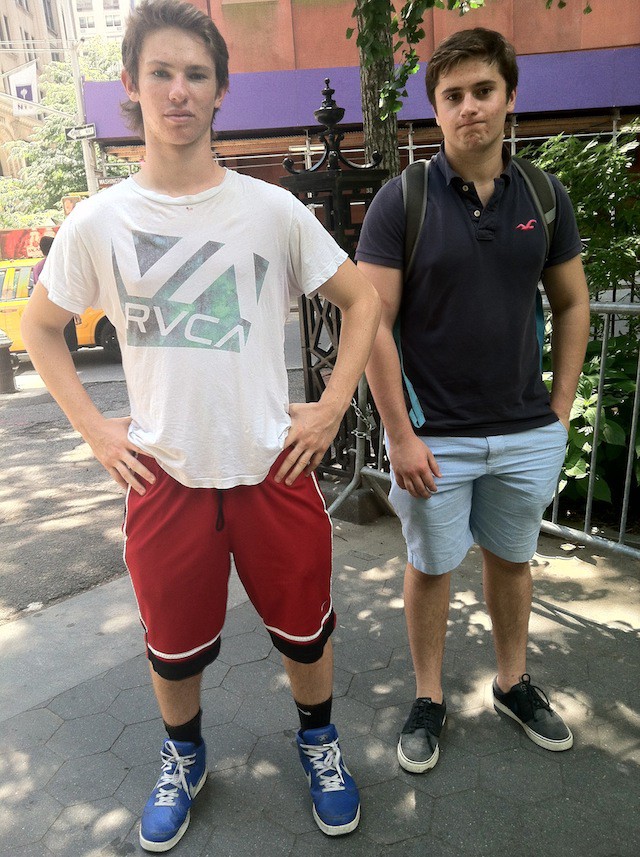
Mike: Senior prom.
Brad: I think I was at the Olympics.
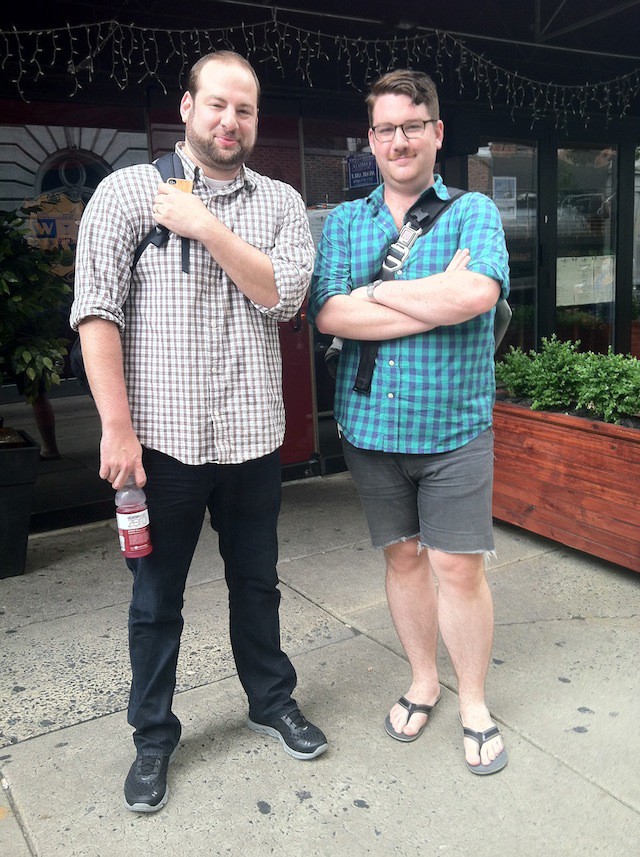
Aaron: I used to have recurring dreams mainly about going to high school.
Uri: I think I had some [recurring dreams] in high school, mainly about physically harming teachers that I didn’t like.
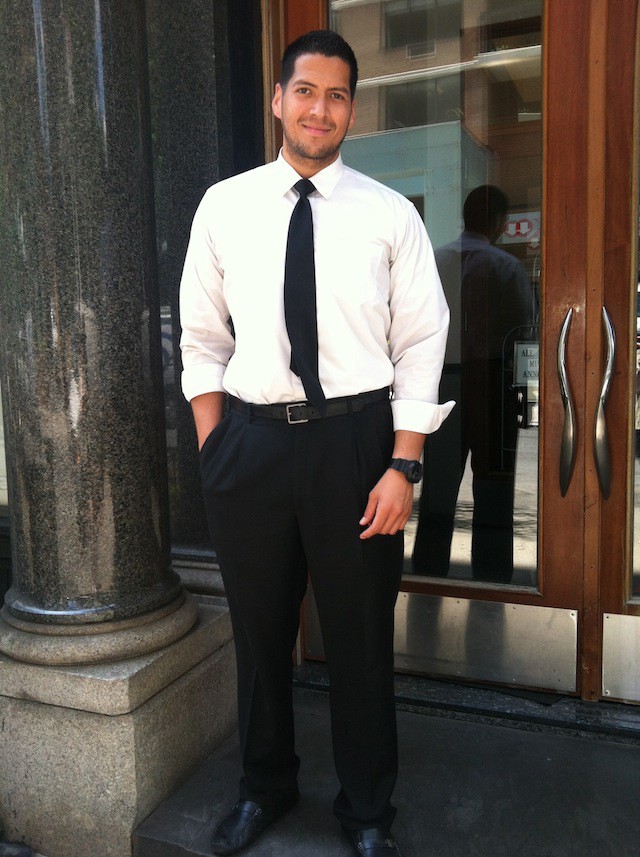
Ramon: Food, maybe?
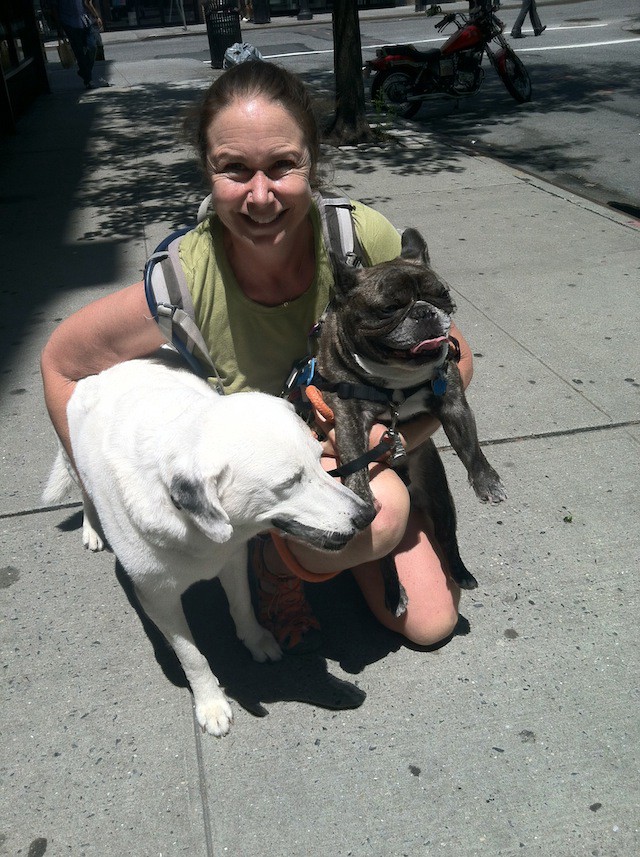
Laura: I have this recurring dream where I’m lost in a hotel and I’ve got dogs with me, because I’m a dog walker, and then I go in and there’s this guy and he flirts with me and I get distracted and I realize that I don’t know where the dogs are. I go to look for the dogs and I get lost in a parking garage. When I come back the dogs are there but then I let them inside to go see what happened to this guy and my biggest dog pees all over the floor.
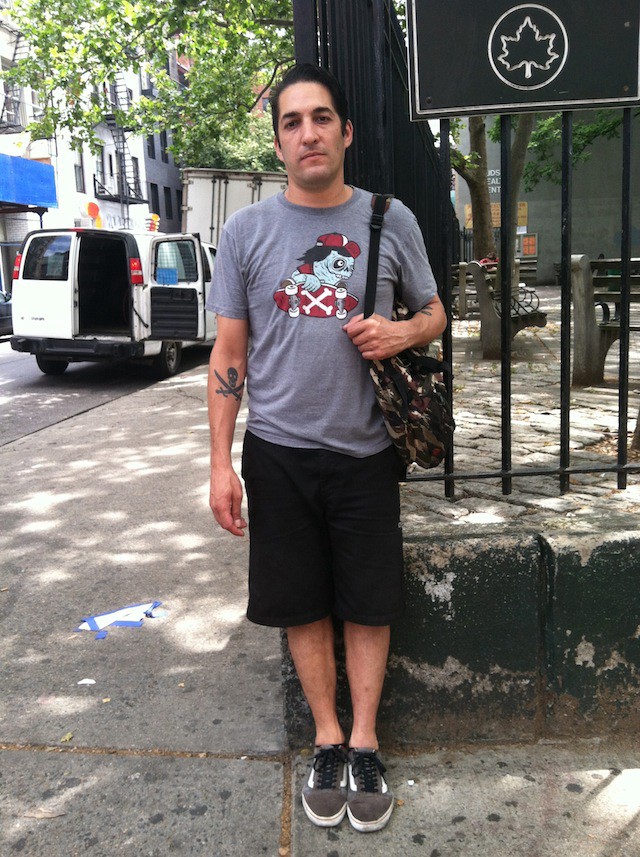
Brian: I don’t remember.
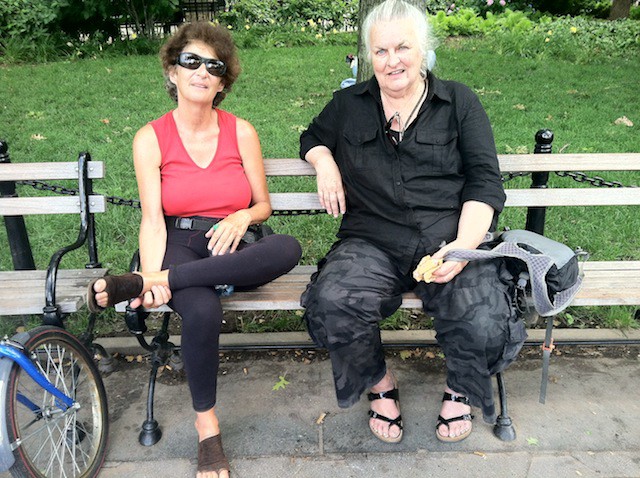
Ellen: Oh I had a fantastic one, I was in the ocean, it was fabulous actually. It was probably two nights ago or something.
Karen: I can’t remember any, really. I forget them immediately.
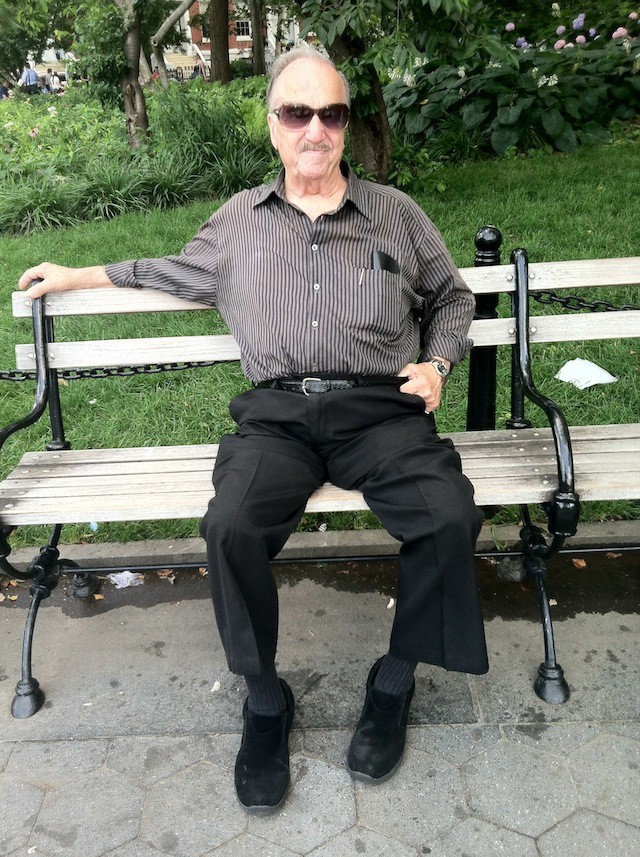
Larry: I dreamed about you.
Becca Hafter is an Awl summer reporter.
New York City, July 10, 2013

★★ The sky looked decisively dark, but was it yet another feint? The first drops — or maybe just drops with no narrative implications — were falling. A burst of thunder, one burst, was audible inside. The shower that came with it was over after it had barely wet down the fire escape and ripened the smell of garbage in the back. It steamed off into yet more low-grade high summer: nothing to suffer through, beyond a little eyestrain in the glare, and nothing much to enjoy.
I Worry About Not Worrying -- Then I Worry More!
by Adam Baer
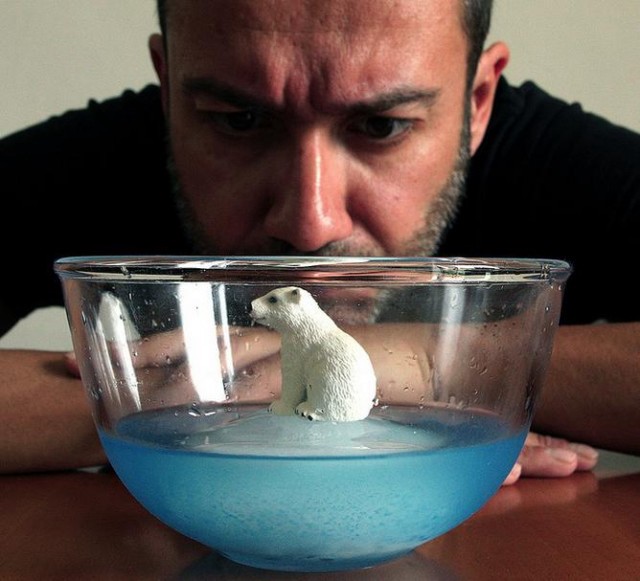
Somehow Still-Alive Guy is not a doctor, and he does not provide medical advice. But he has seen all the doctors! And is currently still alive, and here to answer questions from you. Remember, there are no stupid medical questions — only answers that can get you killed.
Dear Somehow Still-Alive Guy,
I tend to worry a lot. But then sometimes I notice that I haven’t been worried for a while. And then I get worried that there must be something wrong with me if I’m not worried — perhaps a tumor on the part of the brain that usually causes me to worry? Now, you might think that the fact that I am worried about not worrying should put to rest my concern, as I clearly still have the ability to worry, and thus don’t have a tumor on the part of my brain that causes me to worry. But then I wonder if it’s possible that the tumor on the worry part of my brain only causes me to not worry some of the time. All of this is to say, the more I don’t worry, the more worried I become. Help!
Worried You Won’t Reply
Dear WYWR:
An adult life of worrying was always impossible for me not to worry about. I hail from an American family of risk-averse worriers, who hailed from an Eastern European family mostly killed by Nazis. So, in addition to worrying about when the next malignant shoe will drop while I live a post-multiple-cancer life, I may know where you’re coming from, even if I’m generally happy when I don’t have something pressing on my mind, which is not always the case.
We’re both in luck, however, because my wife, a psychologist who works with neurology and cancer patients, some who have been in war zones, tells me that a part of the brain related to worrying, the anterior insula, a subcortical physical clue that we were once reptiles, actually has been shown to increase in size when one meditates. And that kind of growth isn’t cancer. So it stands to reason that the anterior insula is not expanding of its own volition in people who don’t meditate. Although worrying can be practiced in a meditative fashion, I suppose.
Another point of interest: Research shows that people who worry also tend to make better decisions in tense financial situations. So don’t worry if in the process of treating your worry with meditation your income takes a hit and you are hence considered less reptilian. (Obviously, this information suggests a correlation between the financially savvy and the slimy, and as I hope to achieve something approaching that former state, and therefore to worry more, I shall not dog such a progression.)
I’m in no position to tell you if you have a tumor, but I can suggest that you’re not the first person without truly concerning symptoms to worry about the presence of one (see my most recent column, which tackled a question about MRIs and included a link to a scene featuring Woody Allen’s hypochondriacal character in Hannah and Her Sisters). Lest I harp on the obvious, there are plenty of fine physicians who will investigate your neurological health.
My thinking? You’re probably worrying more intensely now that you’re “not worrying” than you did when you thought you were simply worrying all the time. That’s the way anxiety disorders work. They’re like the mafia. Just when you think you’re out… [fill in the blank]. Then, once they “pull you back in,” they feel like they pull you harder, and your worrying has hit a peak level because you think you’ve beat it but also that it could be watching you at all times, perhaps from behind the bushes.
You’ll truly beat your anxiety — and few of us ever completely do, so let’s say “treat” (and “exist healthfully in concert with”) instead of “beat” — when you don’t think about it as much and just live mindful of what’s in front of you, in the moment. So, again, meditation. Don’t join a pyramid scheme or cult devoted to it, unless you’re into that sorta thing, but maybe get an audiobook or mindfulness app. Steve Jobs meditated, and according to his biography, he was fairly cool, unless he was trying to crush you.
What you should be concerned about is if you’re worrying less and engaging in risky behaviors, aside from writing to advice columnists in our age of NSA surveillance (although, please note, readers: sending me a question for this column to alive [at] theawl.com is as confidential endeavor as we can make it without government connections).
Worrying is an anticipatory function and survival tactic: it prevents us from putting ourselves at risk for danger. If you start engaging in bizarre and dodgy behaviors — robbing American Doll stores, say, or stalking Christopher Walken to force him to play chicken with you on an empty highway, and if you’re worrying significantly less at these times — there’s at least one oddly bad thing going on for you upstairs.
For now, why not seek out a therapist, and an MD if recommended, and try some deep breathing and long walks in nature. If you end up on psychotropic meds after seeing a doctor, make sure you don’t get the kind that might increase anxiety, like Wellbutrin, and that you stop drinking those triple espressos — except, that is, when you and your parole officer are simultaneously concerned that you’re not worrying enough.

Dear Somehow Still-Alive Guy:
What are the different diseases I can get from my dog sleeping in my bed?
Animal Insomniac
Dear AI:
I have never co-habitated, much less slept with, a dog. A German shepherd once attacked my mother as a teenager in a locked piano practice room, and we were subsequently raised to fear most animals, including some hirsute people. It’s been huge progress for me simply to get to the point where I want to be around animals, and I still don’t want them to lick me, although I can’t say that also applies to all humans.
That said, here’s a comprehensive list from the CDC of diseases you can get from dog germs. Interesting to note is that if you’re in any way immunocompromised — which doesn’t just apply to people with HIV but to those being treated for cancer, recovering from organ transplants, taking immunosuppressants, young children, or pregnant women, among others — you’re at a higher risk for getting Spot’s possible leptospirosis, a.k.a. “Rat Catcher’s Yellows,” “Black Jaundice,” or any other variety of terms used to describe just one dog infection that begins like a flu but could end with meningitis. If your dog goes outside, there are a few other things on that list to worry more about, like tick-borne diseases. Talk to your vet about Frontline and other anti-tick and anti-flea treatments.
My general rule — if only because I’m not ready for all the licking and wet-dog stuff, and like to travel — is to not be a dog’s “father” but a dog’s “uncle.” I visit, with hand-sanitizer in tow, the dogs of my friends, pet them, bring them gifts. Then I leave after a few hours without any same-bed sleepovers. If you’re at all concerned about these things, you might look into how you can live without a dog. Most people, however, tell me that their lives are much better with a dog than without one (that whole unconditional-love thing).
I mull this over now and then, but despite my desire for more adoring and obedient companions I have not changed my attitude about the dog-parenting business. It’s so hard to take care of oneself that some of us get to write advice columns in which we can discuss medical problems because of our breadth of experience with them. I advise you in the meantime to eat the immune-boosting superfoods compiled and commented on regularly by hard-working magazine writers. Blueberries, I have found, are the answer to many of life’s problems.
Adam Baer (a.k.a. Somehow Still-Alive Guy) is The Awl’s vexing medical questions advice columnist. He’s not a doctor but a functional post-cancer young survivor of too many potentially fatal and mysterious maladies/treatments that include classically funny words like “stem cells,” “endoscopic neurosurgery,” and “bone-marrow transplant.” Adam’s written essays and stories for NPR, the New York Times, and Harper’s, among other publications. He lives in Los Angeles, and seems curiously normal. Top photo by Luca Vanzella. Dog photo by Sheri.
What Comes After The Twink?
by Thomas Rogers

The first time someone called me a twink, it was 2003 and I was standing at the urinal in the basement of a laser-and-smoke-filled club in Toronto. I was 19, rail-thin and still in my excitable stage of post-coming out euphoria, which, in my case, meant wearing cut-off jeans and raising my hands above my head when I danced. That night, I had gone to the club with two new friends of mine, one of whom, an aspiring actor, kept telling me about this amazing drug, “poppers,” he had just tried. Like most of our Friday evenings, we spent the night flailing our gangly limbs on the dance floor to Girls Aloud or Jamelia, or whatever awful pop music gays listened to in 2003.
But towards the end of the night, a middle-aged man sidled up to me as I was peeing downstairs. “Hey,” he said, breathing on my neck. This being my first experience with the drunken-gay-bar-urinal come-on, I stood there awkwardly without moving. “Hey,” he repeated. Finally I nervously — and silently — turned around to leave. “You think you’re so great, but you’re just a fucking twink!” he screamed. I rushed out the door, with no idea what the man was talking about.
I rejoined my friends on the dance floor, and they told me it only meant I was young, thin and pretty. “He’s just jealous,” they said, dancing around, before pointing out something in the distance. “Oh look, it’s Sarah Polley’s bachelorette party!”
Now I hear “twink” everywhere. That last season of “Girls” had a character bragged about “partying with twinks.” In an episode of “Happy Endings,” the gay character Max is told not to go to “twink night” at a gay bar because he’s “not a twink.” JWoww, on her reality show spin-off, made a joke about going out with “an otter, a bear and a twink.” When Bravo TV exec-cum-personality Andy Cohen recently called One Direction “twinks,” fans were so pissed off that he had to apologetically tweet that he “misused a word.” (“Often considered a derogatory gay reference,” explained a gossip blog.) One Direction’s spokesperson responded that she wasn’t offended, because the word twink “just means attractive!”
I’ve also noticed it popping up more often in conversations, even with straight people. Whenever my New York friends and I would see young waifish men running for the subway while clutching oversize designer handbags, we would mention how hard life is for a twink. The other day, I was chatting with a friend about someone with an unfortunate but resilient penchant for masturbating at public urinals. “He’s a disaster twink,” I said. My friend protested: “He’s 30! He’s too old to be a twink.” Then we thought about it. “I don’t even know what that term means anymore,” he said.
Like “bear,” “twink” actually refers to a specific category of gay men: one some level mildly effeminate, and definitely skinny and hairless — and roughly between the ages of 18 and 25. In the UK — and this is a phrase that fell out of favor in the U.S. years ago, because it’s kind of gross — the more common word for twink is “chicken,” and a man who preys on them is a “chicken-hawk.” But while other (and newer) gay categories, like “otter” or “wolf,” are merely descriptive, and self-assigned, “twink” is almost always meant as an insult. It’s never a self-descriptor, unless used self-effacingly. A twink is, by implication, naive or clueless and easily overwhelmed by life, luggage and responsible outerwear. “We like to think that what makes the Twink so attractive is that, along with youth, he retains a certain sense of wonder, enthusiasm and enjoyment in his new found gayness,” explains Dan Anderson’s really not very good Sex Tips For Gay Guys, before dismissing twinks as jobless, broke, wide-eyed bar-hounds.
Somewhere along the way “twink” has stopped being just a cutesy, mildly negative stereotype and become something more malignant: An easy shorthand for a lot of vicious stereotypes about gay people, a way to covertly make fun not just of someone’s mild gender variance but really their “gayness” as well.

The origins of the word are a little bit nebulous, but it seems to have first emerged some time in the late 1950s. Its first official use, in a 1963 American Speech article, defined it as meaning “pansy-ass, petunia, punk, swish, weenie.” (“Note that twink(ie) picks up aspects of the ‘dumb blonde’ stereotype,” says Language Log.) Urban Dictionary suggests the word comes from “Teenage, White, Into No Kink,” but that’s surely a false acronym. I emailed Charles Kaiser, author of The Gay Metropolis, and he wrote: “I don’t think there’s much doubt about the provenance being the Hostess Twinkie, the too-sweet treat with the yummy inside — addictive, but ultimately unsatisfactory.”
“Twink” is just the most recent name for a category that has existed for thousands of years: the young, nubile, effeminate, naive man. In plenty of societies, relationships between adult men and much younger, usually hairless male pupils were fairly unremarkable. In the 50s BC, the Roman poet Catullus wrote about his desire for a young man whom he called “luventius” (or “Youth”) and Lucretius wrote about the sexual appeal of “pueri” (or “boys”). In 18th-century Britain, effeminate homosexual men of unspecified age were referred to as “mollies” and hung out in “molly bars.” As George Chauncey explained in Gay New York, 19th-century New Yorkers who had sex with men were separated into “fairies,” “wolves” and “trade” — a division of labor in which fairies were vaguely similar to twinks, if age-indeterminate and more prone to cross-dressing. (Bryant Park, by the way, was once a popular “fairy” hangout). In all cases, these effeminate and usually submissive young men were the target of far more ridicule (and worse) than their older or butcher contemporaries.
In his Rise and Fall of Gay Culture, Daniel Harris describes how gay liberation “divided a community that was once more uniform in its appearance into two warring factions” — the macho muscle man and his opposite. As the gay porn industry grew larger and more sophisticated, it built on and spread these distinctions. While companies like Colt and Falcon focused on hairy men or muscle men or both, other studios specialized in “twink porn,” featuring blonde 19-year-old surfers and lithe Czechs with unfortunately feathered hair.
In the last two decades, gay categories, both in porn and real-life, have become increasingly numerous and specific. Even as the line between straight and gay has become blurrier, the urge to classify oneself seems to have become more pressing. Maybe it’s a reflection of the popularity of Internet porn. Maybe we’ve all just seen too many photos of “bear soup” and felt left out. Maybe it’s a function of the new ambiguities of gay culture, and gay men’s need to find some sense of belonging within it.
For a moment, not long ago, twinks briefly rose from the bottom for victory: They became the “hegemonic body type,” according to Shaun M. Filiault and Murray J.N. Drummond of the University of South Australia, in a piece published in the Gay and Lesbian Issues and Psychology Review in 2007:
By the late 1990s and early 2000s, a new body type was idealised by Western gay men. In qualitative interviews with young gay men Drummond (2005) and Bergling (2007) found that a thin, yet slightly muscled body type was revered; those findings are supported by quantitative research (Yelland & Tiggemann, 2004). Further, a smooth body, with little to no body hair, is thought to be most attractive (Bergling, 2007; Drummond, 2005) and the importance of penis size is less explicit for younger gay men (Drummond & Filiault, 2007). The importance of clothing has shifted, from the working class sensibility of the Clones, to a high fashion sensibility of the Twinks, who tend to be ‘label conscious’. Furthermore, youth is emphasised in this context, as aging is seen to not only be related to the deterioration of the body, but perhaps also with the HIV epidemic itself (Berling, 2007; Drummond, 2006; Levine, 1997).

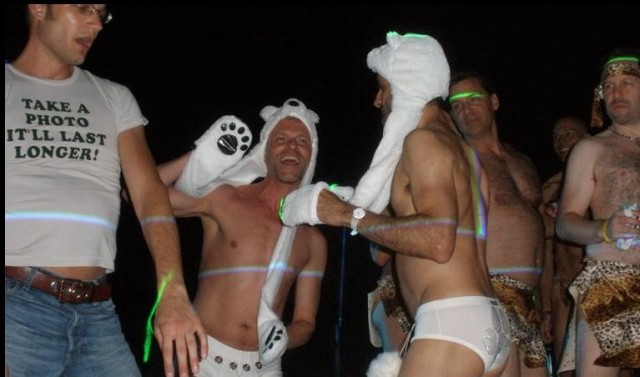
Since their shining moment, the hierarchy has become more muddled. The twinks won, but by assimilation, and changed along the way. These days, if you go to a gay bar in the East Village or a similar mixing ground, it often seems like hipsters and bears and Chelsea boys (which are now Hell’s Kitchen boys), young and old and in the middle, are all converging into a new be-plaided be-sneakered bearded identical look. Which community owns the signifier that is the white belt? Everyone: the retro bear, the aging hipster, the preppie youngster. Increasingly, gay style seems to have become a mishmash of straight and gay and whatever increasingly homogenized style is floating around. (And this year, somehow, everyone has the same short haircut.) As a result, these classifications — “he’s a bear and I’m an otter” — allow us a greater sense of uniqueness; it’s the narcissism of minor differences.
There is a now-infamous phylum of bear-related categories: conventional bears (big ol’ hairy men), cubs (young bears), black bears (African-American bears), brown bears (Latin and South-Asian bears), panda bears (Asian bears), polar bears (older, white-haired bears), muscle bears (bears with gym memberships) and pocket bears (bears under 5’8″). To beardom and beyond, there are wolves (muscular, hairy, sexually aggressive men), otters (skinny, hairy men), circuit queens (men who go to circuit parties), muscle queens (muscular men), homo-thugs (hip-hop-styled black gay men), art fags (gays who like art), DILFs (older gay men), actual boring Gay Dads In Mom Jeans (those are Ds you wouldn’t L to F), and, bless them, theater queens.
Through it all remains the twink, which remains the most embarrassing, the most stigmatized and also the most vague of gay categories. I’ve heard people describe a 40-year-old as a twink (“he’s wearing Abercrombie”), along with a paunchy 22-year-old (“he’s got highlights”) and a bearded muscular 25-year-old (“he works in fashion”). There is a New York nightlife promotion company called “antiTwinkfi” whose parties seem almost exclusively attended by young, twinkish men. A Thought Catalog list of “31 Things Twinks Like” includes “foam parties,” “being the center of attention,” “going to brunch and having mimoosaaaaas,” “working at mall stores like Wet Seal,” “underwear with the ass cut out” and “bottoming.” A similar if less brutal listicle on The Homo Life about “Signs You’re a Twink” addresses the latest crop of young men, and includes “You have a One Direction poster” and “You want to go to a taping of the Anderson Cooper talk show.”
Like hipster before it, twink has become a non-specific word that serves to define something distasteful but whose meaning changes depending on who says it and to whom. A lot of the time, a twink seems to be anybody — no matter their body type or their age — who is girly or makes poor consumer choices and/or seems to be in a state of perpetual disrepair. And while nobody will admit to being a twink, everybody is happy to flag one for everybody else to ridicule. Calling someone a “twink” has become an easy way for a gay man (and now, straight people) to prove that he is manlier, smarter, more tasteful or successful than the person he is talking about.
The twink now serves the role played by sissies in most 20th-century film, and Jack in “Will & Grace”: they are catastrophe against which we measure ourselves, that allow us to feel “normal.”
One person who perfectly encapsulates the strange politics of twinkness is Chris Crocker — the guy in the 2008 “Leave Britney Alone!” viral video. He was 18 then, peroxide-blonde, effeminate and skinny. It was like watching an adult man pretending to be a small child throwing a fit, and it was a great opportunity for comedians to make fun of Crocker’s effeminacy. A few days later, Jimmy Kimmel showed the clip on his TV show, and a Kimmel cast member pretended to be Crocker’s father: “Why? Where did I go wrong? I bought him a BB gun. I took him camping. I played catch with him and now my baby boy looks like a crazy old woman? He’s not a human being! He’s not a human being!”
Oh No They Didn’t called him an “insufferable twat (twink).” Commenters on a story in The Stranger complained that “the paper wasted money to fly [a reporter] to meet a pet twink.” A transgender message board filled with members’ debating his identity; some assessments included “obnoxious twink.”
Crocker was already well-known for YouTube videos in which he danced around in women’s clothes and said the word “bitch, please!” over and over and over again. The videos were breathtakingly irritating and compulsively watchable. You got the sense that Crocker was a self-absorbed, clueless young boy who didn’t know who he was or who he was supposed to be, but pretended that he did by imitating characters he’d seen on reality TV.
But many gay men, particularly from small towns, went through a phase when they thought they were terribly special, and were so starved for attention that they created drama, if only because they were insecure? We wore horrible clothes, and got bad haircuts, and bought awful sunglasses. When we see twinks — not only extreme examples like Crocker, but drunk young guys at the bar, or overwhelmed fashion assistants, or any other young, vaguely disastrous gay guy — we cringe at their effeminacy and their lack of control because it represents their failure to repress a part of themselves that we find shameful. It’s easy to despise them because they represent a gay man in the most awkward, embarrassing stage of becoming an adult.
If you watch the documentary Me at the Zoo, you learn that Crocker’s story is, in many ways, the archetypal tough-luck gay story. He grew up without a father in a small, conservative town in Tennessee. His single mother became an addict. He was bullied for his effeminacy until he dropped out of school. Living in a place where, in his words, the only gay pride parade was in his bedroom, he turned to to YouTube and began expressing himself to the world.
In a recent issue of Out, Bret Easton Ellis tore apart the push by organizations like GLAAD to promote gay men as politically-correct “Magical Elves” who are squeaky clean and brimming with confidence. “What this notion leaves out is that … we are not all well-adjusted Good Gays,” he wrote. What about the gay men who are disasters, who don’t have it all figured out, who are loud and obnoxious and make mistakes? As Ellis points out, these rough edges are precisely what makes gay people interesting in the first place.
Maybe it’s time for twinks to reclaim some of their icons. (Let’s start with: Yves St. Laurent, Alan Turing, Edward II, James Baldwin, John Waters, Noel Coward, Alvin Ailey, Lord Byron, Truman Capote, Lord Alfred Douglas, Xavier Dolan, Rudy Galindo, Bradley Manning, Sal Mineo.) At least, they’re getting decent media representation now: After the timely disappearance of Jack and friends on “Will and Grace,” TV and film has started including more nuanced twink characters: Maxxie on “Skins,” Kurt Hummel on “Glee,” Patrick in “The Perks of Being a Wallflower,” Elijah on “Girls” — even Ser Loras on “Game of Thrones.”
Perhaps, at some point in the future, twink will stop being a dirty word and just start being a category, like “teenager” or “pregnant” — a natural phase of some people’s gay life cycle instead of a full-fledged identity, one that ends when we tentatively figure out who we are and where we belong. In 2011, Crocker reached the predictable and ultimate if also somewhat worrying apex of his own twink phase: He cut off his hair, began working out and started posting shirtless photos of himself on Twitter. The online world marvelled at Crocker’s emergence from feminine, disastrous adolescence. “Chris Crocker is hot now,” announced one blog.
Standing with the guys auditioning for the same part as you is so awk.. pic.twitter.com/aQubErghOM
— Chris Crocker (@ChrisCrocker) July 10, 2013
And then. According to Gay Porn Blog, Crocker’s first porn film, which he recorded in 2012, was extraordinarily popular. But he began to regret having done it almost immediately, and now his X-rated Twitter account hasn’t posted since early May, and his porn site, ChrisCrockerXXX.com, is just a parked GoDaddy page. They grow up so fast.

One of the strange aspects of twinkness is that nobody knows what happens after you age out of your identity. Cubs turn into bears; otters remain otters; muscle queens remain muscle queens until they gain weight and turn into bears and then polar bears. But there is no word, as of yet, for post-twink. (“Hairless otter?” a friend of mine offered: “Party ferret?”)
I’m not sure when I stopped being a twink, but it probably happened around the time I turned 22. Before that, I had been living a low-pressure existence, working easy jobs in video stores and trying very hard to seem cool to other people who worked in video stores. Then I got into grad school, moved to New York, grew out my beard and started reading more lesbian fiction. In New York, I jokingly described myself as a twink to a fellow student, and he laughed: “Oh, please. You’re the least twinkish gay man I know.”
A bearish friend of mine from New York recently visited me in Germany, and I took him to a very Berlin party. I warned him would be “heavily populated by party twinks.” By the time we got there, on a Saturday afternoon, the party had already been going on for almost twenty-four hours, and the trees and giant backyard dance tents were filled up with hundreds of skinny gay boys in their early twenties, mostly rolling out of their minds and covered with a thin layer of sparkles.
We watched as one waifish, clean-shaven young man with glazed-over eyes ripped apart his tank top while dancing until it hung limply off one shoulder. Two hours later we saw him walking around wearing nothing but some sort of crudely-made diaper. By 2 a.m., there were piles of twinks falling off platforms and gathering in the corners next to the bathroom, making out with each other and their female friends.
We stood on the patio and joked about how grateful we felt that we were older and mostly sober and hadn’t ripped apart our clothes, but we also admitted that we were a little bit jealous. We no longer had the naïveté or the self-regard of these young, excitable gays, but we also lacked their exuberant energy, their willingness to screw up and figure it out later, to tear apart tops and refashion them as undergarments. When we left the party, around 3:30 am, there was a line of teens and twenty-somethings around the block. I walked past them, tired and sweaty, filled with nostalgia, irritation and doubt.
Thomas Rogers is a freelance writer, editor and translator who has written for New York, Slate, Salon and The Globe and Mail, among others. Twink photographed at gay pride by “JoeinQueens.” Twinks dressed as bears photographed at a “bear dance party” by “Ed and Eddie.”
